Tags
Agadir, Ait Baha, Anti-Atlas, Appalachians, Atlas Kasbah, Barbary Ground Squirrel, European bee-eater, Laatik, Linaria ventricosa, Morocco, Spur-thighed Tortoise
It was a gentler day on Thursday 12th March. ‘Oh good’, thought I as I started this post, ‘Fewer photos to share.’ Fail!
It was back in the minibus today, as we headed off, making several stops as ever, to the Anti-Atlas mountains. An odd name, given by a couple of British geologists in the 19th century. The rock formation is extremely old, dating back 300 million years, linked with the Appalachian Mountains, but coming to the surface only some 80 million years ago as a result of the collisions of the African and European plates, and heavily weathered since.
Throughout the week, we saw far more than I was able to capture on ‘film’, but this time at our first stop I took:
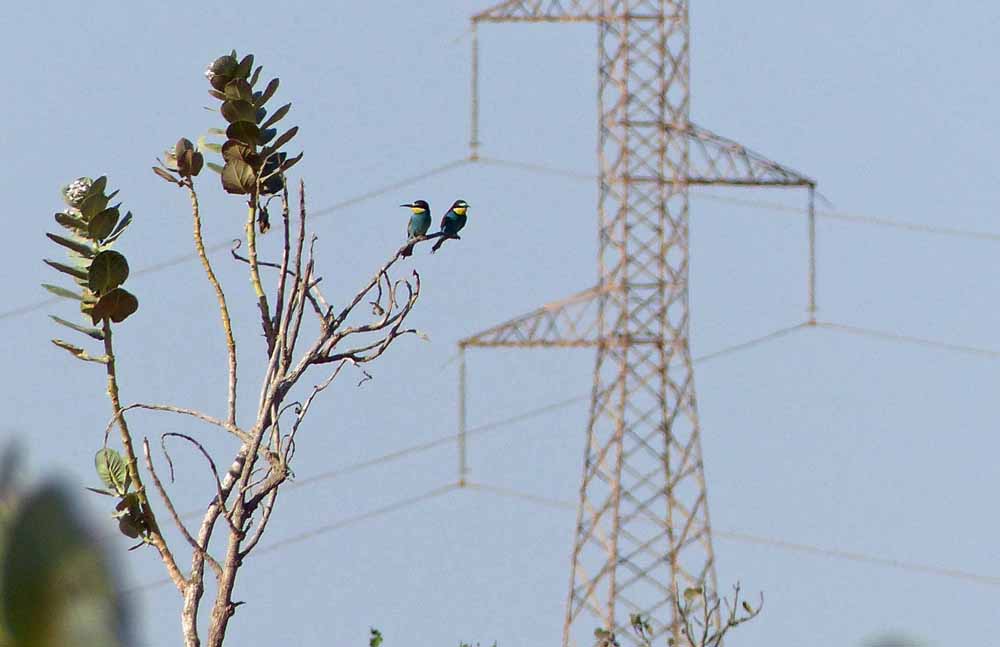
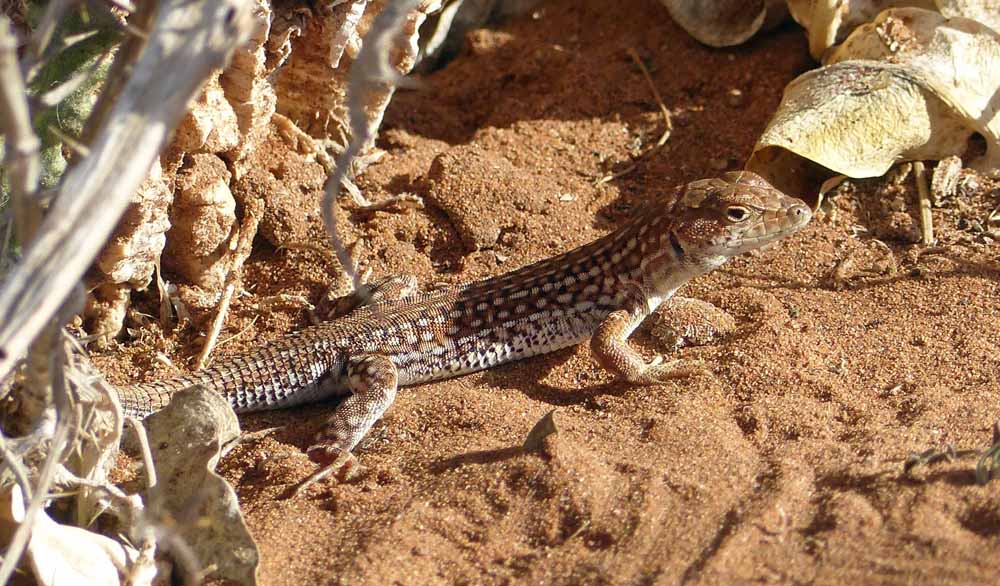

Our next stop was for a drink at Ait Baha. ‘Ait’ means ‘tribe’ or ‘family’ in Berber, and appears in many town names. This one is best-known for shoe-making, and we wondered round a co-operative, some people buying. There was no aggressive hard-selling. I think this actually made one all the more likely to buy. The guilt I felt for not doing so would have been absent had I been pestered. (I would have bought if any of these lovely slippers and shoes had had supportive insteps.)
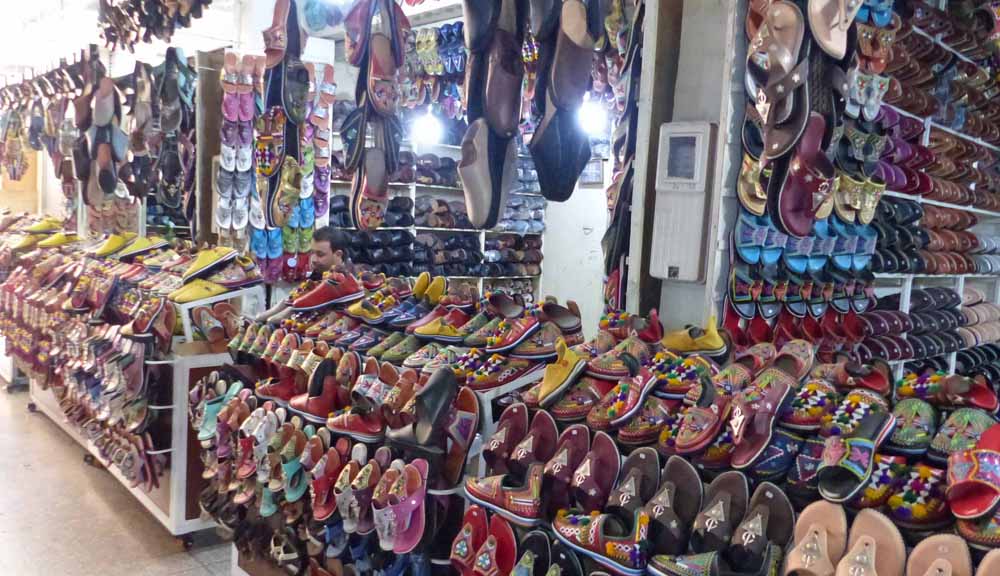

Moving on we saw, among other things:

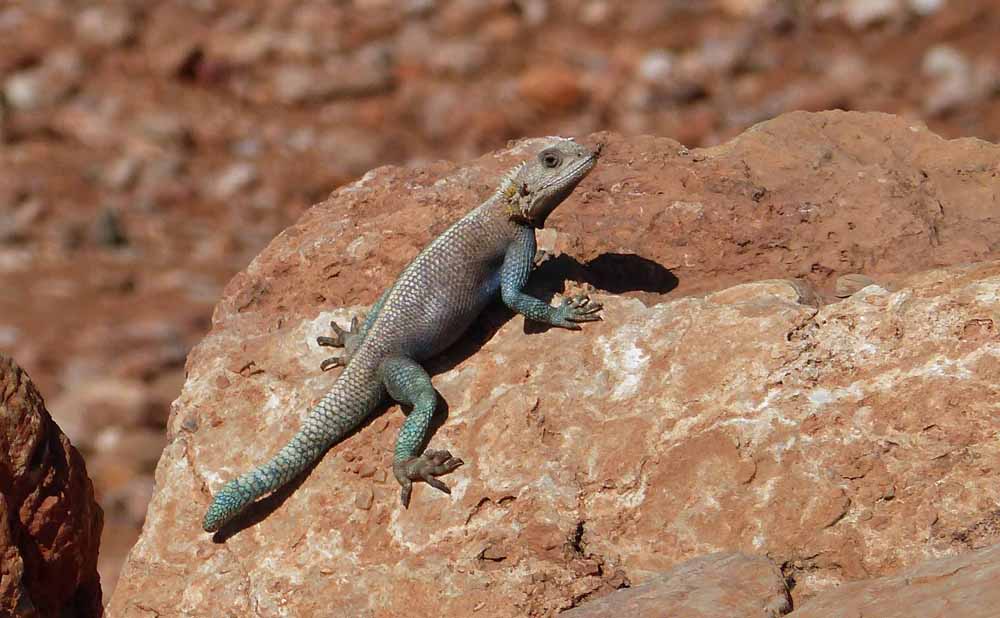



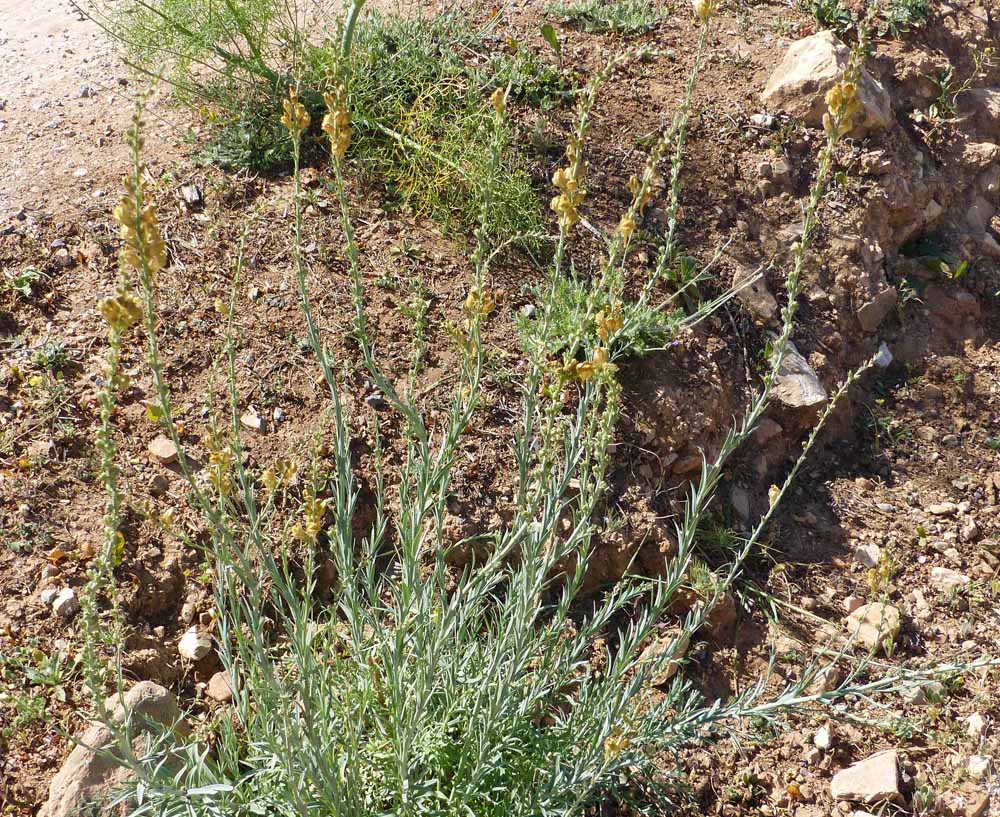


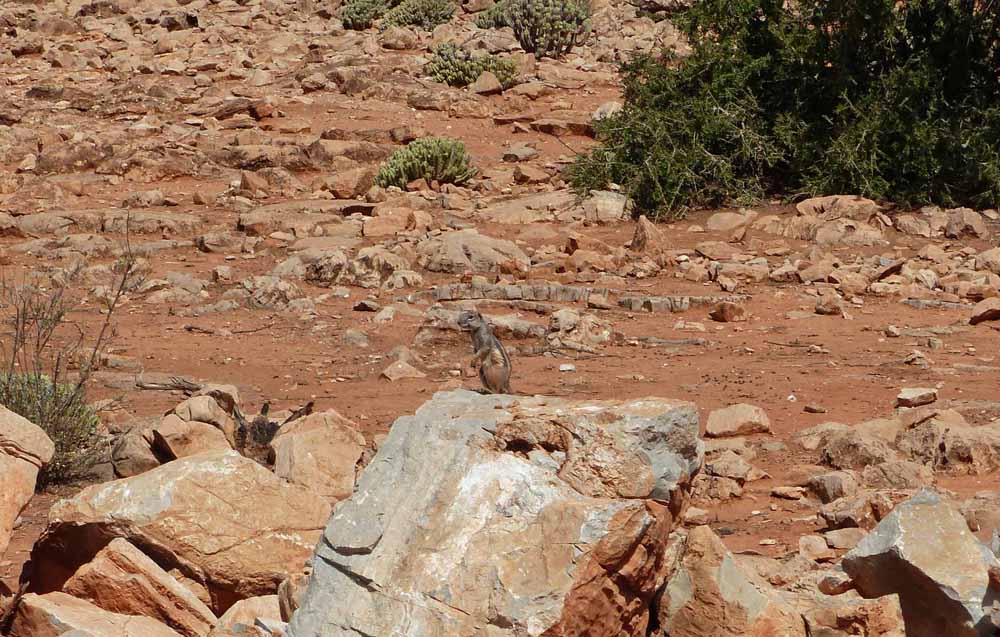

We were heading for the hilltop village of Laatik, and its agadir. An agadir was originally a defensive grain store, but expanded its purpose to the storage of anything precious owned by villagers. Each family had one large cupboard/room in the agadir. This building was at least 600 years old, but there was apparently a more famous and larger one elsewhere dating back some 900 years. We were greeted by its guardian, though Mohamed gave most of the explanations.
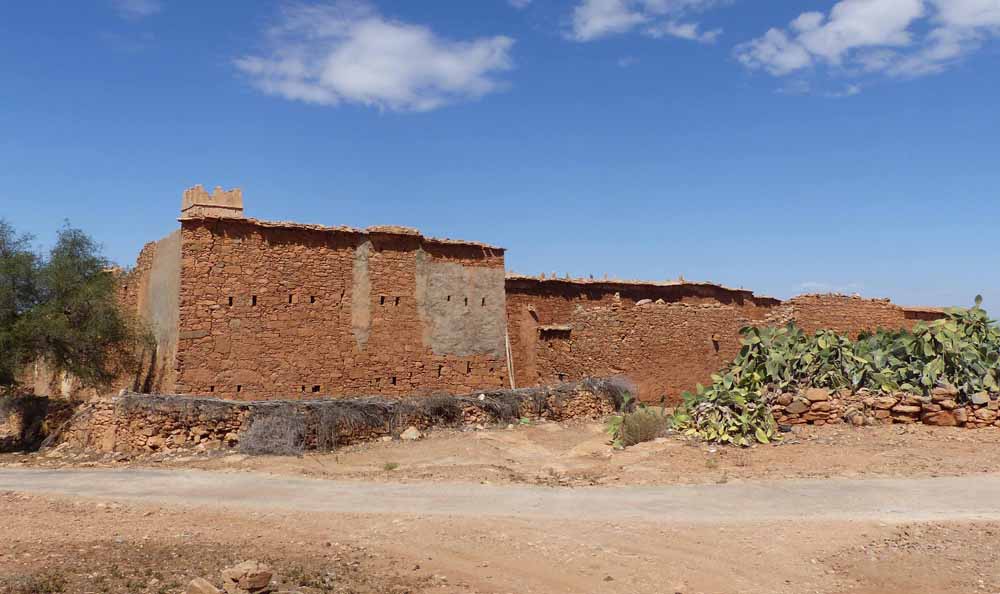


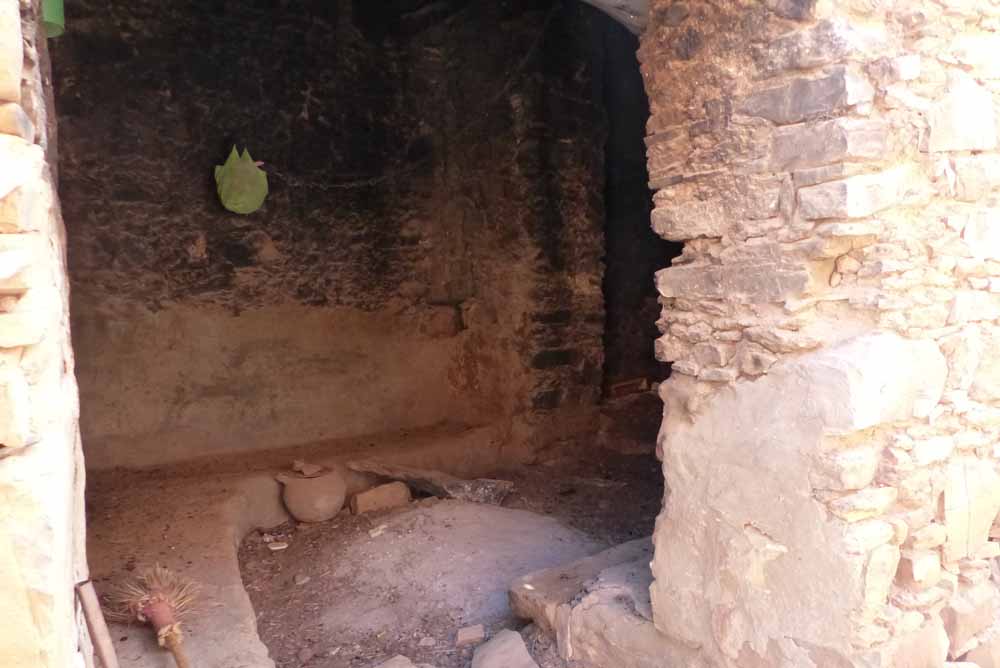

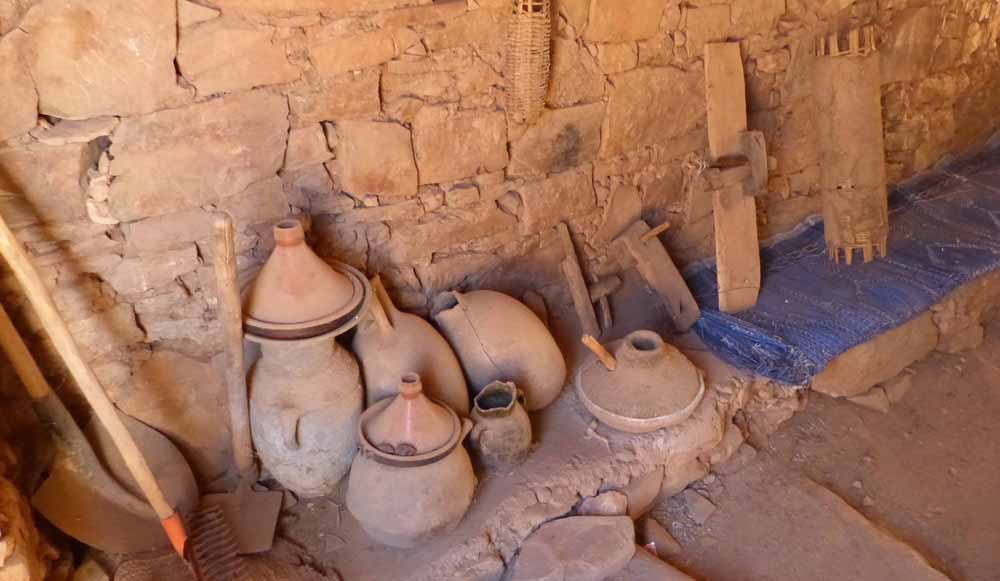
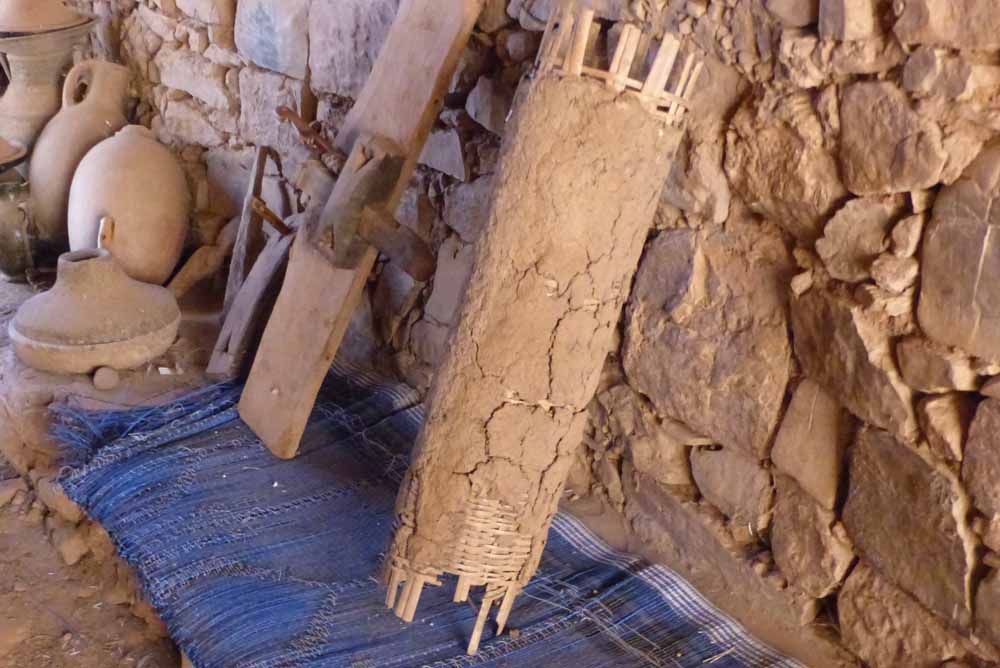




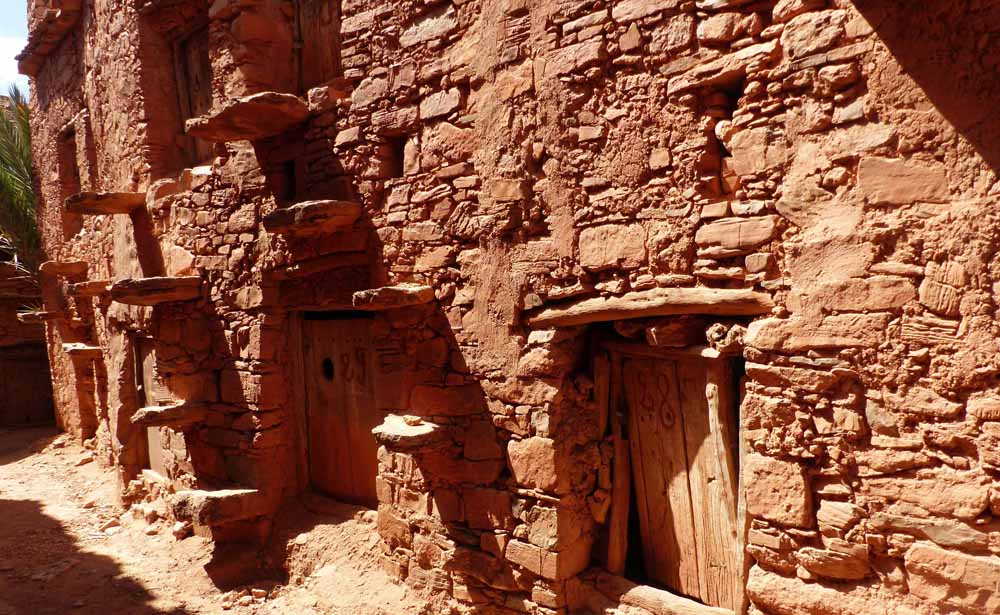
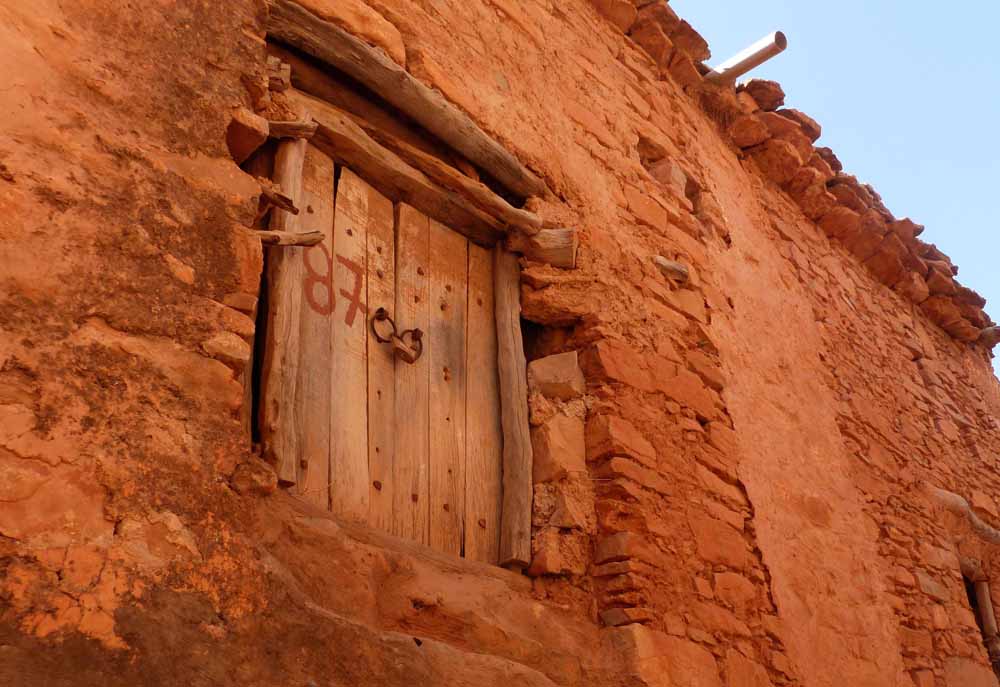

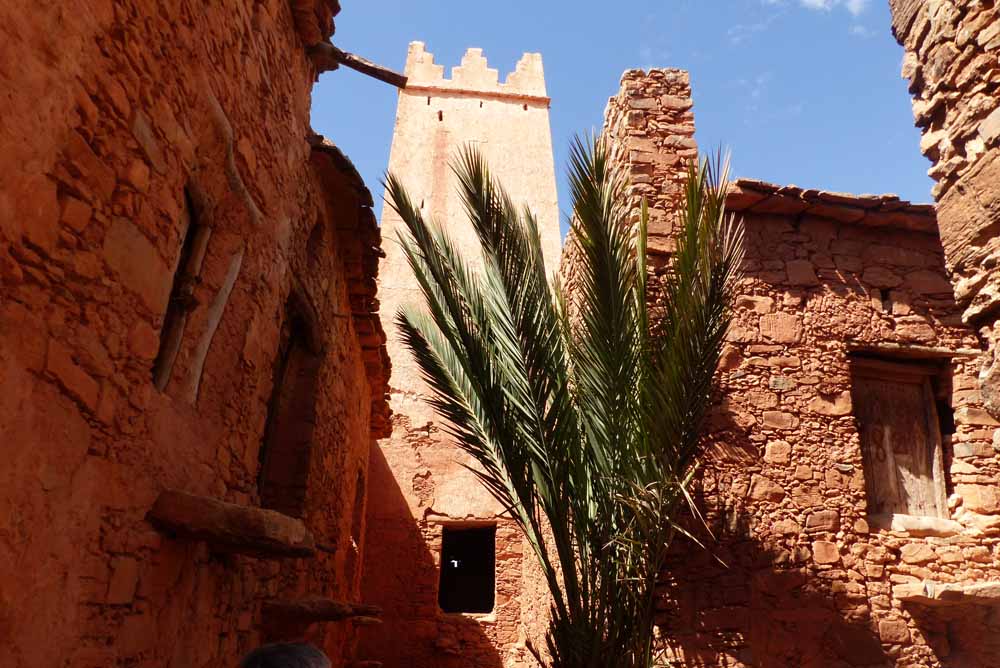
It was intended that we should eat our packed lunch in that corridor, but in the event we had to beat a hasty retreat. Locals objected to our presence, for fear that we were bringing the coronavirus with us. At that point (I was keeping a very close eye on the national and international situation) only 2 cases had been declared in Morocco, each of those Moroccan residents in northern Italy, who had returned to Morocco for a visit. I don’t blame those local people in the least for wanting to be rid of us.
Our leaders found a lovely spot a few kilometres away on the way down for us to eat, including even a natural bench for those of us who couldn’t crouch on the ground. I was happy to be in the open air and not in that corridor.

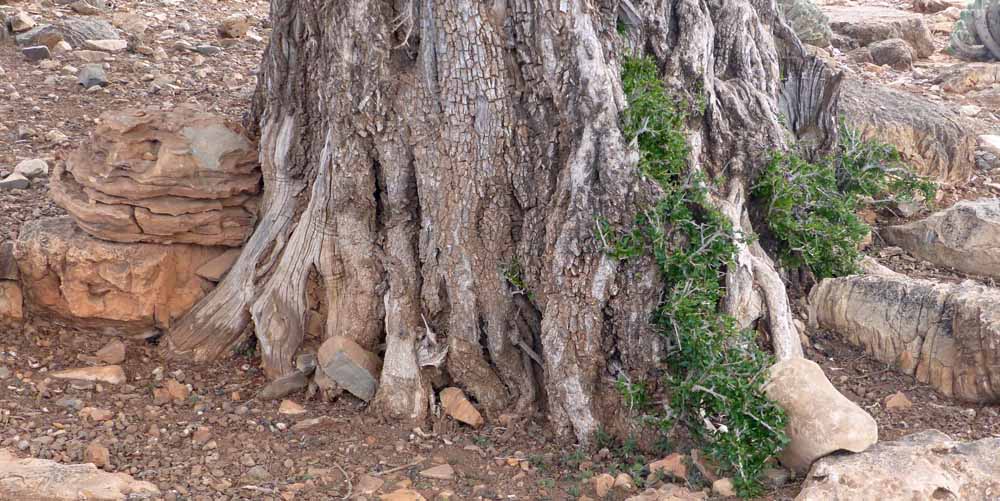

We were then allowed 30 minutes to wander around at our will. I concentrated mainly on (those cactuses that weren’t cactuses, but) euphorbias. Hélène had told us the previous day that their local name was ‘Mother-in-law’s seat’. Some ‘humour’ is universal.

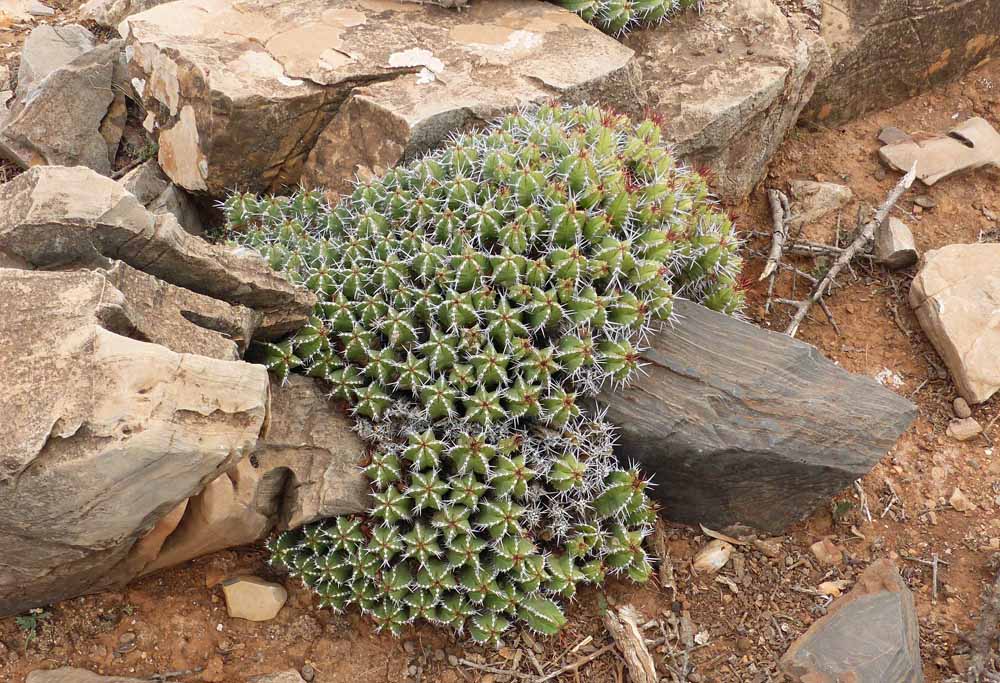

There were some beautiful trees as well.
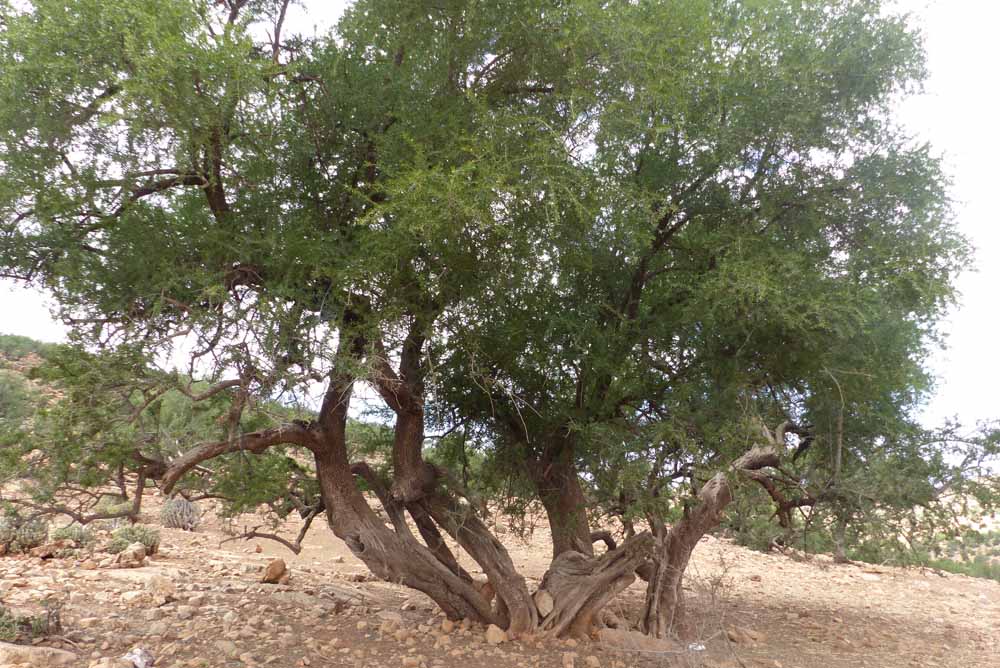
Once we had moved on in the minibus, at last I managed to get a decent picture of a Barbary Ground Squirrel.

The sky had started clouding over as we had left the agadir, and we actually caught a glimpse of a shower in the distance at one point in the afternoon. This was the only hint of precipitation we saw all week.

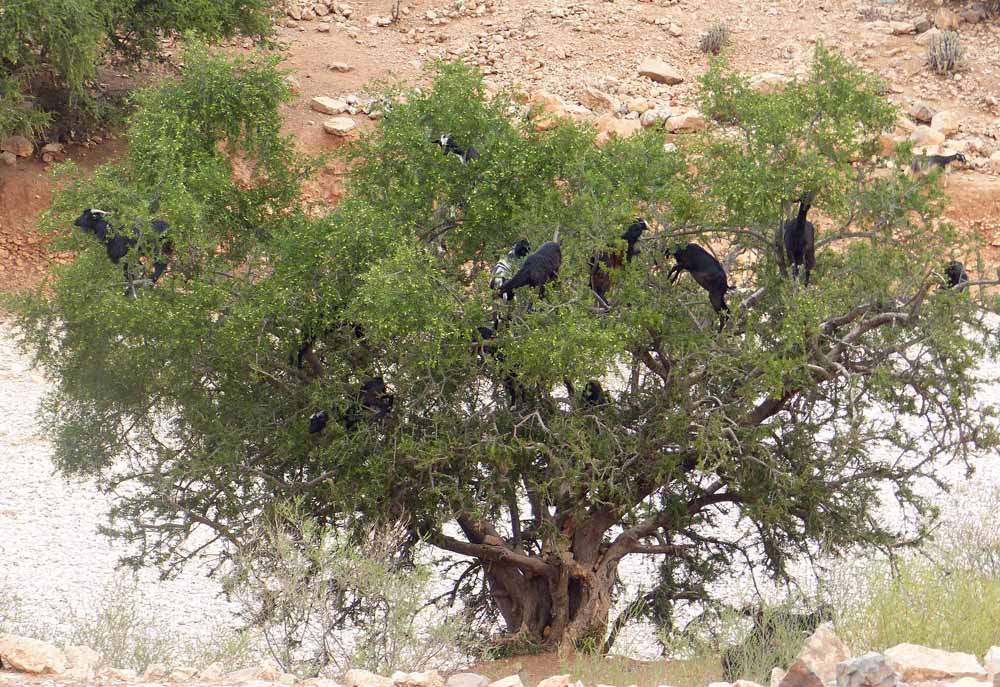
Back to Ait Baha for afternoon refreshment. The kestrel was still there, but now on the windowsill.

The traditional method of building houses in Morocco is to plan for a next storey, should it prove desirable and affordable. So these houses are only unfinished in the sense that they may or may not grow in the future. Meanwhile, the floor of that next storey, with window spaces all ready, serves as a roof terrace.


These very modern apartment blocks on the outskirts of ever-expanding Agadir make no such provision.
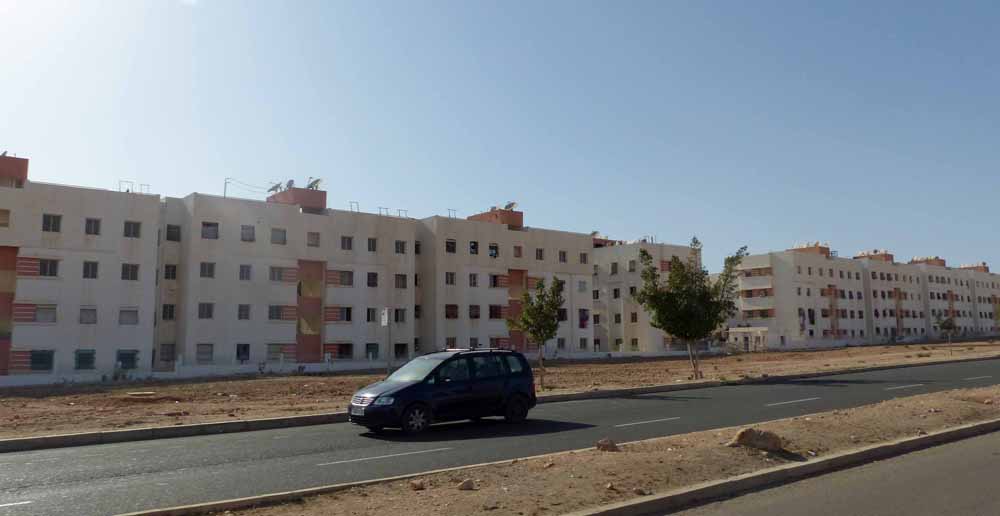

Once we were back on the main dual carriageway towards Agadir, I was thrilled to see a woman in colourful dress driving a large colourful tractor, coming in the opposite direction. Unfortunately I had no time to capture the image.
Always good when our temporary hilltop home comes into sight.



Another fascinating day. I would certainly have been tempted by those slippers.
Great pictures. I particularly liked the squirrel and the fringe toed lizard.
LikeLike
Ah, the elusive squirrel. And cheeky!
LikeLike
I particularly enjoyed your visit to the former storage place for the villagers, your text and pictures explaining what it was like very well.
LikeLike
It was fascinating. I’m glad we are able to see it before we were asked to leave.
LikeLike
Yes, you must be really pleased.
LikeLiked by 1 person
I love the tree climbing goats!
LikeLike
When you think if it, goats are renowned for climbing and sure-footedness, so why not trees if the leaves taste good? That said, botanists loathe them, believing they are responsible for the bare landscape that is Morocco.
LikeLike
For a quiet day, you saw and did a lot.
LikeLike
Who’s talking!😉
LikeLike
Les anciennes roches de l’Anti-Atlas ont dû te passionner. Très intéressante, cette découverte de l’agadir. Le coronavirus commence son intrusion, hélas, mais comme toi, j’aurais préféré le 2e coin pique-nique.
La petite tête qui dépasse du rocher est adorable ! Bravo pour la 3e photo ! Et cet “arbre à chèvres”…
LikeLike
It was very interesting to learn the meaning of the town name ‘Agadir’.
LikeLike